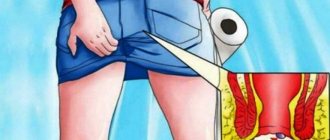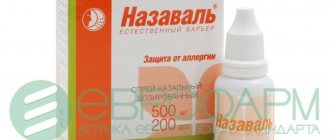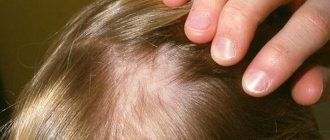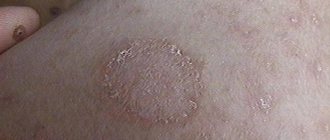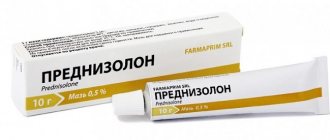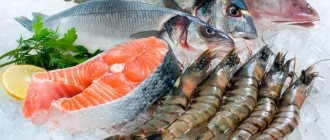What could you be allergic to?
How to determine what you are allergic to yourself? Unfortunately, this is not always possible. There are so many allergens that in some cases a detailed examination with allergy tests is required.
Food products, cosmetics, medications, fabrics, and animal hair can cause spots on the skin. Often, an allergic rash on the body is caused by chemical or mechanical effects on the skin.
For example, spots appear after a nettle burn, frost, exposure to ultraviolet rays, or cleaning the house using household chemicals. Common allergens include the following:
- food products, including food additives and flavorings;
- decorative cosmetics, body care products (women are often allergic to face cream, and men are allergic to shaving gel);
- plant pollen, medicinal herbs, poplar fluff;
- insect bites or their poison;
- some types of metals;
- medications (allergy to medications can occur in both children and adults);
- clothing made from synthetic fabrics;
- animal hair;
- alcoholic drinks;
- household or construction dust.
There are two types of allergies: true and pseudo-allergies. The first term means the onset of the disease immediately after contact with a foreign protein, which provokes the production of immunoglobulin E. As a result, an immune reaction appears to the release of histamine.
Depending on the type of skin allergy, the condition of the body, the age of the person, and the duration of contact, there may be mild, moderate or severe symptoms. The second term refers to various rashes on the skin (spots, blisters, pimples), as well as itching. It differs from the previous form in that the immune system is not involved in the response to the allergen.
Not only skin changes, but also disturbances in the gastrointestinal tract may appear. Very often, pseudo-allergies are provoked by citrus fruits, chocolate, coffee, chicken eggs, and honey. It’s interesting, but sometimes a small amount of an irritant (for example, a tangerine slice) will do nothing, but a few pieces will cause red spots on your arms and legs.
It is not the contact with the allergen that is important, but its quantity or time of exposure.
Kinds
Drugs that are used for external treatment of allergies can be divided into the following groups:
- hormonal;
- non-hormonal. The main focus is moisturizing and nourishing the skin, restoring its balance after using hormonal drugs;
- combination ointments. They may contain anti-inflammatory (also called non-steroidal), antibacterial or antifungal components;
Hormonal drugs can be divided into classes according to the degree of impact and activity of the main active ingredient:
- Class 1 - these are ointments that provide minimal effect due to their weak ability to penetrate tissue. This class includes Hydrocortisone ointment;
- Class 2 – moderate effect on the skin. Such drugs include Lorinden, Afloderm;
- Class 3 – rapid relief of inflammation. This class includes drugs such as Beloderm, Advantan, Celestoderm and Elokom;
- 4th grade – a very powerful effect on damaged areas, due to deep penetration into cells and tissues. The most popular drug in this class is Dermovate.
Hormonal ointment against skin allergies
Hormonal ointments
- Advantan. Hormonal cream, used for inflammations such as dermatitis, eczema, etc. From 470 rub.
- Akriderm. This skin allergy cream is effective in eliminating itching, urticaria, dermatitis, etc. From RUB 100.
- Hydrocortisone is a cheap ointment for skin allergies of non-microbial etiology. It is also available in the form of an eye ointment and is used to eliminate swelling and inflammation due to allergies on the eyelids. Price from 24 rub.
- Prednisolone.
Hormonal ointment for skin allergies, effective against dermatitis, eczema, etc. From 30 rub.
Antiallergic eye ointments
| Name of ointment | How to use | Is it possible for children |
| Celestoderm | 2-6 times a day for 5-7 days. Celestoderm eye ointment is applied to the outer part of the eyelid. | Not applicable. |
| Dexamethasone | Apply to the inside of the eyelid three times a day for 3 weeks. | Up to 6 years old. |
| Lorinden S | Apply to the outer part of the eyelid twice a day for a week. | Over 10 years old. |
| Hydrocortisone ointment | Eyelid ointment is applied to the inside of the eyelids 5 times a day for a week. | From the age of 18. |
Hormonal creams
Children under four months are not recommended to use hormonal creams, even with severe allergic reactions. Use only under constant supervision of a pediatrician. The course is no more than 7 days.
Creams that can be used by children from 4 months:
It is used for severe allergies on the child’s skin.
Contraindications: serious problems with the physical and mental development of the child, individual intolerance to the components.
Children from six months:
Creams are used when absolutely necessary, severe allergies. You can cover the child’s skin with the product no more than one-eighth of the entire area. The maximum course is 7 days.
Contraindications: individual intolerance to drugs, serious hormonal imbalances.
Children over two years old:
- Celestoderm;
- Flucinar;
- Flucicort;
- Akriderm.
Hormonal creams and ointments can only be used under the supervision of a doctor. Some of them should not be used in childhood.
They can change the child’s hormonal levels and lead to disruptions in the development of the child’s body. Although such creams are very effective, they are used in the most extreme cases.
Safety rules when treating children
Any ointments in the first days of use should be applied in compliance with several simple rules:
- Before application, the ointment must be diluted with a regular nourishing cream, which certainly does not cause any adverse reactions.
- The mixed composition is applied to the area of irritation and all changes that occur are monitored.
- The composition of the ointment is not suitable for the baby if the manifestations of allergies intensify. Therefore, this remedy is canceled and another medicinal composition is selected.
Hormonal ointments are applied in accordance with the following recommendations.
In the first two to three days they are mixed with baby cream, then they switch to undiluted products, and at the end of treatment they resort to dilution again.
This method of treatment has a milder effect on the body and avoids steroid withdrawal syndrome.
The course of treatment prescribed by the doctor must be completed. And after its completion, you need to use a moisturizing cream for the skin for some time, this will allow the damaged skin to recover faster.
Before applying the ointment, the affected area should be washed with running water, this is necessary to remove contaminants and toxins.
The attending physician must give a full recommendation on the use of this or that type of ointment and do not hesitate to inquire about all the nuances of therapy.
Article on the topic: Ointments for itching, how to choose, instructions.
Non-hormonal allergy creams for children
Allergy cream for children is not hormonal - it is a medicine that effectively relieves the inflammatory process on the skin, helps to quickly and effectively eliminate the symptoms of allergic reactions, such as rashes, itching, peeling, erythema, blisters, papules. Such means include:
- Gistan. It should not be confused with the hormonal cream Gistan N. Gistan cream is made on the basis of natural medicinal ingredients. It contains: birch buds, string, lupine, calendula, speedwell, violet, as well as active ingredients - dimethicone and betulin. The cream is used for allergies in case of rashes in the form of blisters, relieving the symptoms of itching, urticaria, and relieving the inflammatory process. It also helps with allergic reactions from insect bites. Adverse reactions are possible only in case of individual intolerance to any substance in the cream;
- Skin Cap. It contains the substance zinc. Its action is to relieve inflammatory pathologies on any skin areas of the body, dryness, peeling, itching. It also has antibacterial and antifungal properties, which is very important for children's skin. It is allowed to use only from one year of the child’s life. There are practically no contraindications except for individual intolerance;
- Epidel cream. It contains the active substance pimecrolimus. Prescribed for clearly progressive allergy symptoms from three months of age. It has a good antiallergic effect, but unfortunately, it has a number of side effects, which mainly appear at the beginning of the treatment period. Therefore, an allergic reaction to the cream itself may occur or the color of the treated area of skin may change. In rare cases, the development of lymphomas has also been noted. When using it, you should follow the doctor’s specific recommendations, minimize artificial feeding and exposure to open ultraviolet sunlight. In case of skin infection, applying Epidel cream is strictly prohibited;
- Protopic. The active substance is tacrolimus. Ingredients of the external remedy: cinquefoil, yarrow, propolis, sophora, cardophilene. The cream is indicated for children only from the age of two and in a very minimal dosage. Has a pronounced anti-inflammatory effect. Does not cause skin atrophy;
- Wundehil. Made with natural ingredients: propolis, yarrow, cinquefoil, sophora, cardophilene is also added. Can be used as a children's allergy cream on the face. Has a disinfectant, anti-inflammatory, soothing effect. Does not irritate the mucous membranes of the eyes and nasal cavity;
- Dioxidin, Sulfargin. For allergic reactions, they have anti-inflammatory, antimicrobial and antibacterial effects;
- La Cree cream. Refers to natural external remedies. It contains: walnuts, licorice, avocado oil and string. The main contents are panthenol and bisabolol. It is recommended as an effective antiallergic remedy to relieve symptoms of inflammatory skin reactions, itching, rashes, peeling and other unpleasant reactions. Has a moisturizing and regenerative effect. The cream is practically free of side effects, except for individual intolerance to any medicinal substance of this product;
- Auxiliary ointments for children with allergies: Radevit, Socoseryl, Videstim, Actovegin, Methyluracil ointment.
Indications
Depending on the type of allergen, the individual characteristics of the body, the stability of the human immune system, all external manifestations of allergic reactions can appear in various forms.
Most often, all skin rashes are accompanied by unpleasant sensations, which have a significant impact on the general well-being of the sick person.
The action of external hormone-based products is aimed at quickly counteracting the release of histamine.
Corticosteroids suppress the activity of the cellular structure by stopping the inflammatory process caused by the allergen.
The use of ointments is permitted in the presence of external manifestations, for example, such as:
- Redness (scientific name: Erythema). They may appear as local spots or redness over a large surface of the body;
- Swelling. Mainly appears in the area of the nose, lips and eyelids, but other parts of the body can also be affected;
- Peeling. Basically, any redness is accompanied by peeling. In some cases, it is peeling that is the first sign of an emerging allergy. This manifestation may be accompanied by fever, redness;
- Itching. It depends on each individual case. Sometimes these are only small specific sensations, and in some cases you can directly observe the scratching itself;
- Rash. It can spread throughout the body, or be at a local level, forming some kind of pattern, or an unsystematic arrangement. When a secondary infection occurs, it often develops into pustular inflammation.
- Weeping areas with lesions. They appear after the opening of vesicles containing serous fluid. These manifestations can be called secondary. However, they are the most difficult ones. They often leave scars.
There are several types of rashes:
- dots;
- blisters, which may be empty or contain serous fluid;
- crusts.
Treatment with hormonal drugs is aimed at eliminating the above problems.
However, it should be remembered that the manifestation of only one symptom is a very rare case.
Therefore, when choosing a drug, many factors should be taken into account.
And you should definitely remember that purchasing and prescribing treatment on your own is not recommended.
Non-hormonal creams against skin allergies for children
As mentioned above, only a pediatric specialist - an allergist or dermatologist - can make the correct and most effective choice of cream. Each cream has a number of characteristics of its effect on the child’s skin. For example, if a baby has a combination of rash and peeling of the skin, as well as severe dryness and tightness of the skin on the face, a cream with a moisturizing and nourishing effect is required, which, in addition to treatment, stimulates the regeneration and healing of the skin. If the anti-allergy cream is chosen incorrectly, scars and scars may remain at the site of the rash.
Often, complications with rashes can be accompanied by some kind of infection. If you don't treat newborns' skin with an antibacterial cream, the pimples can become inflamed and cause even more severe itching and the rash can spread to new areas of the skin.
Non-hormonal anti-allergy drugs are as safe as possible for the delicate skin of children, including newborns, so the period of their use can be relatively long. But mothers should know that the desired effect of the cream does not occur very quickly, which is due to its softer and relatively gentle effect on children's skin. Among the most popular non-hormonal creams are Bepanten, Elidel, Fenistil, etc.
Non-hormonal ointments
Non-hormonal drugs can relieve the symptoms of allergic manifestations on the skin, quickly regenerate the epidermis, and also increase local skin immunity.
Elidel (RUR 902)
It has an anti-inflammatory effect and relieves the symptoms of the disease. Elidel is used on all parts of the body, including the face, neck, and head. The use of the product resists further exacerbations and atrophic processes on the skin.
Elidel is allowed to be used by infants from 3 months. The course of treatment is 6 weeks. The ointment should be applied 2 times a day (with rubbing movements).
The ointment is not used for viral, bacterial and fungal infections of the skin.
Vundehil (RUR 170)
Allergy ointment Wundehil eliminates inflammation, has a healing effect on the skin, relieves pain, and removes swelling. Apply the ointment to the affected areas 2-3 times a day in a thin layer (without rubbing). Next, you need to wait for the product to be absorbed. The duration of treatment is until the skin is completely healed.
The drug does not cause side effects, as it consists entirely of plant materials. Vundehil is allowed to be used by children, pregnant women and nursing mothers.
Skin cap (700 rub.)
Skin-cap is a drug of the latest generation with a minimum of side effects and contraindications. Apply the cream to the affected areas twice a day - in the morning and at night. The skin does not need pre-cleansing.
In this case, it is important to endure the course of treatment, which is 4 weeks. The skin should be treated only after thoroughly shaking the product.
Zinc ointment (20 rub.)
Zinc ointment is used in complex therapy. It is advisable to use it as a single treatment only for mild forms of the disease. The drug has a drying and anti-inflammatory effect, relieves itching, swelling and redness.
Allergy-affected areas should be treated three times a day . The ointment can be used during pregnancy and children. The duration of treatment is 5-10 days. If necessary, therapy continues for up to 30 days.
Bepanten (400 rub.)
Bepanten has a regenerating effect. The product quickly eliminates redness, itching, pain, and moisturizes the skin. The peculiarity of Bepanten is that it can be used for children from the first day of life.
The ointment should not be used for weeping type dermatitis. Apply the product three times a day and gently rub into the skin.
Protopik (RUB 697)
Protopic eliminates the inflammatory process. The ointment effectively fights moderate and severe atopic dermatitis. Allowed for use by children over 2 years old. The drug is prescribed if other drugs have not had a therapeutic effect or there are contraindications to them.
Protopic is used on any part of the body, including the neck, face, and head.
The ointment is applied twice a day only to the affected area. Treatment should continue until the skin is completely healed.
Differences between ointments and creams for allergies
How does the effect of the ointment differ from the effect of the cream against allergic reactions on the skin of children? Pharmacists emphasize that the cream has a more gentle and gentle effect and causes less pain in newborns. Ointments are more effective and concentrated compared to creams. For infants under 1 year of age, it is definitely better to use a cream against allergy symptoms, but it is better to entrust the choice of drug to a specialist based on each specific situation.
In newborns and children under 1 year of age, allergic reactions most often occur due to the ingestion of allergenic foods and the use of baby hygiene products. The internal organs of infants react strongly to foods that they or their mother have eaten.
General concepts of pharmacology
Any drug is always available in a specific release form; for a pharmacologist, this is a dosage form. In other words, this is a convenient state of the drug in which it can have the most pronounced effect. Dosage forms are therefore soft, solid, and liquid. Soft forms include creams, pastes, gels, ointments, liniments. People, without really delving into the essence, consider everything that is squeezed out of a tube to be an ointment, and this is wrong. A little education will not harm them, because this is important, because we are talking about children. Ointment is something that is prepared with Vaseline and fat (the base of the ointment). Medicine is added here.
Gel – here the consistency is jelly-like, elastic and plastic, translucent, without fat. The gel can be taken orally and even injected under the skin. Krem is a type of soft ointment, to which water is added in addition to fat or oil. It always has only a softening effect on the skin, nothing more; has a lighter consistency. A separate group includes special softening substances - emollients. These are fats or fat-like compounds that form a thin film that retains moisture, but does not interfere with the penetration of oxygen into the skin. Due to this improved water and lipid metabolism, the skin heals faster.
The role of ointments and creams is increasing because children under 5 years of age practically do not undergo SIT (specific immunotherapy), which is considered quite effective in adults. Therefore, we can only rely on local treatment. Children's skin is always very delicate, especially in infants, and compliance with the dose, frequency of application and choice of the drug itself is always important. It often happens that an effective antiallergic ointment suddenly does not work for a child with allergies.
The child’s immune system cannot distinguish between substances that are beneficial and harmful to itself, so an allergy may also occur to the drug itself. And it turns out that such an ointment in an adult may simply not have an effect and is replaced, while the same conditions in a child will worsen his condition. This is why consulting a specialist for your baby is so important.
Products for face, eyelids, hands
Allergy ointment for face
An allergy is a response of the body associated with increased sensitivity of the immune system to various irritants: pollen, food, dust mites, cosmetics, etc.
The choice of remedy depends on the cause of the allergic reaction. Hormonal ointments are considered the most effective for adults, but for minor rashes it is better to use a non-hormonal antihistamine ointment.
Ointment for allergies on the face of a child should be prescribed by a pediatrician to avoid side effects.
Allergy ointment for hands
As a rule, hormonal ointments are used to quickly eliminate symptoms on the hands, and then the course of treatment continues with non-hormonal creams of weaker action. This treatment regimen was developed by doctors to achieve a positive effect with minimal use of hormones.
Allergy ointment for eyelids
Hydrocortisone is the most popular antiallergic hormonal ointment for the eyelids, which is known for its low cost. It effectively eliminates inflammation and swelling of the eyelids during seasonal allergies, and is also effective against allergic reactions to cosmetics. Among non-hormonal drugs, Bepanten is widely in demand.
Symptomatic manifestations
The most common manifestations of allergies in children are urticaria and dermatitis. Manifestations of urticaria in the form of a small pink rash, similar to pimples, appear on the face, neck and arms. It can turn into spots, blisters and merge into plaques; then the itching becomes constant. Dermatitis is divided into atopic (AD) and contact. They are both characterized by allergic manifestations, but atopic is associated with heredity, and contact is acquired. Its manifestations are more severe: the skin is hyperemic, blisters and cracks appear on it, the skin is dry, itchy and flaky. Then those painful crusts form on the cheeks, which are so painful for a baby under one year old.
There is also the concept of diathesis - this is not a separate nosology, but a predisposition to allergic pathologies. With diathesis, no treatment is required, since there is no pathology; Moreover, treatment itself can provoke the appearance of allergies. Only moisturizing creams are applicable. Prevention and general health are important here. To summarize: for urticaria, ointments and gels are needed; dermatitis - require creams and emollients. Regardless of the choice of treatment, contact with the allergen is first excluded. You cannot experiment and buy products yourself.
Cost table of popular drugs
There are a lot of allergy medications in pharmacies, and prices vary significantly depending on the manufacturer. List of prices for popular antiallergic drugs.
| Name | Group | Cost in rub. |
| Elidel | Non-hormonal | 930.00 |
| Gistan 300 mg 36 capsules | Non-hormonal | 164.0 |
| Bepanten ointment 5% tube 30 g. | Non-hormonal | 544.94 |
| Advantan | Hormonal | 360.00 |
| Dermovate | Hormonal | 339.00 |
| Fluorocort | Hormonal | 273.30 |
| Triderm | Combined | 602.00 |
| Clotrimazole ointment 1% 20 g. | Combined | 44.00 |
| La-cree | Moisturizing | 81.73 |
| Fucidin | Antibacterial | 353.00 |
Wishing you all a speedy recovery and good health! May your children always be healthy and you happy!
Allergy ointment for children is used when a negative reaction of the body is not caused by an external irritant. As medical practice shows, skin allergies in children and the appearance of itching occur with the consumption of certain foods and under the influence of household chemicals. What should you apply to the skin to not only relieve unpleasant symptoms, but also reduce the risk of recurrence of allergic rashes on the delicate skin of babies?
Moisturizing and wound-healing medications
Any rash on the skin that is of an allergic nature is accompanied by dryness and peeling. To eliminate these unpleasant manifestations, experts prescribe medications to children that have the following effects:
- Moisturizes dry skin.
- Heals wounds and cracks.
- Stimulate regeneration processes.
Children are often prescribed the following medications intended for external use: Gistan, Bepanten. For the speedy healing of skin lesions, Vundehil and Actovegin are prescribed. These drugs have proven themselves in the external treatment of wounds affected by infection.
Universal medicines
Currently, you can purchase combination drugs in pharmacies that have the following effects:
- moisturizing;
- regenerative;
- antipruritic;
- anti-inflammatory.
They can be used for external treatment of allergies. Specialists prescribe the following ointments and creams to young patients: La-Cri, Mustala Stelatopia, etc. Under these trademarks today a wide range of products is produced, intended both for therapy and for performing hygienic procedures. Before starting to use ointments and creams, parents should consult with allergists.
Young children are more likely to experience allergic reactions than adults. This is due to the abundance of new substances in the environment that the baby’s weak immunity cannot fight. One of the signs of an allergy is a rash on the skin that causes irritation, itching, peeling, and pain.

